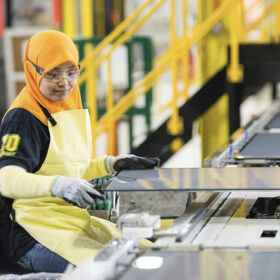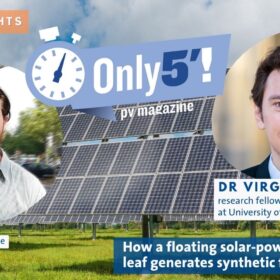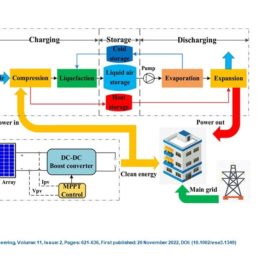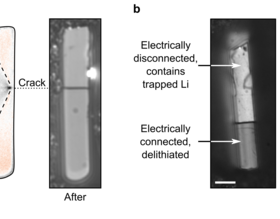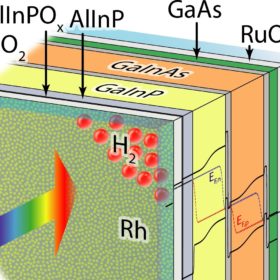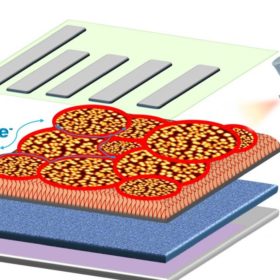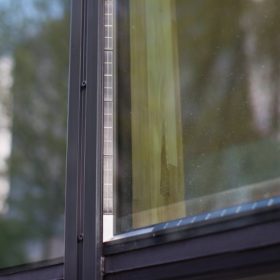Weekend Read: New turf for thin films
Thin-film technologies have long promised to make a major impact on the solar industry but have largely been constrained to niche applications and research labs if they were not shredded by the market. After several false starts, current trade dynamics and promising research programs may help solar thin films find their place in the sun.
Only5mins! – How a floating solar-powered artificial leaf generates synthetic fuels
University of Cambridge researcher Dr Virgil Andrei sits down with pv magazine to discuss an innovative ultra-thin film device capable of generating clean synthetic fuels while floating merrily on the River Cam.
Hybridizing photovoltaics with liquid air energy storage
An international group of researchers has designed a new hybrid photovoltaic-liquid air energy storage (PV-LAES) system. Their economic evaluation for the proposed 2 MW PV-LAES project showed that the investment payback period can be within 10 years, and the accumulated net profit can reach up to $2.2 million from a life-cycle perspective.
Floating ‘artificial leaf’ for solar-to-hydrogen production
University of Cambridge scientists have developed lightweight floating photocatalyst devices that produce green hydrogen and syngas. The leaf-like photoelectrochemical devices show potential for scalability.
Optical microscopy technique to study prevention of battery failure
Researchers at the University of Cambridge have examined one of the fastest-charging anode materials by using a low-cost, lab-based optical microscopy technique. Their findings showed that particle fracture, which can reduce the storage capacity of a battery, is more common with higher rates of delithiation and in longer particles.
Thin-film amorphous silicon greenhouses begin to sprout
Researchers have matched the tinting of semi-transparent PV modules with the bandwidth of light that plants absorb for photosynthesis. A promising trial with basil and spinach has opened up economic opportunities for farmers.
The psychology of climate-change denial – we’re all on the spectrum
With fire-extinguishing rain on the east coast, coronavirus flagged an urgent threat and PM Scott Morrison drumming up support for technology and free-market forces to beat climate change, it all made for a weekend to shake the resolve of some Australians to act on their carbon emissions. Understanding the psychology of how we perceive risk and commit to action can help us focus and keep fighting the fight.
New solar water-splitting cell demonstrates 19.3% efficiency, increasing longevity significantly
The cell uses a novel approach that increases its conversion efficiency and longevity at the same time. Researchers claim it is a new world record for this type of application and highlight its importance in storing renewable energy in hydrogen to compensate for output and demand fluctuations.
Researchers show world-record 20.9% perovskite cell, new SSG process increasing stability
This marks another world record conversion efficiency for perovskite solar cells. A newly developed process reportedly reduces non-radiative recombination of the cells. The new cell is the result of joint research between the England-based Universities of Oxford, Cambridge, Surrey and China-based Beijing.
Solar-powered smart window technology takes a big leap forward
Scientists at the U.S. Department of Energy’s National Renewable Energy Laboratory (NREL) have presented a thermochromic solar window with a conversion efficiency of 11.3%. Meanwhile, performing experiments on dye-sensitized solar cells, Cambridge scientists have determined the molecular structure of working solar cell electrodes within a fully assembled device that works like a window.
